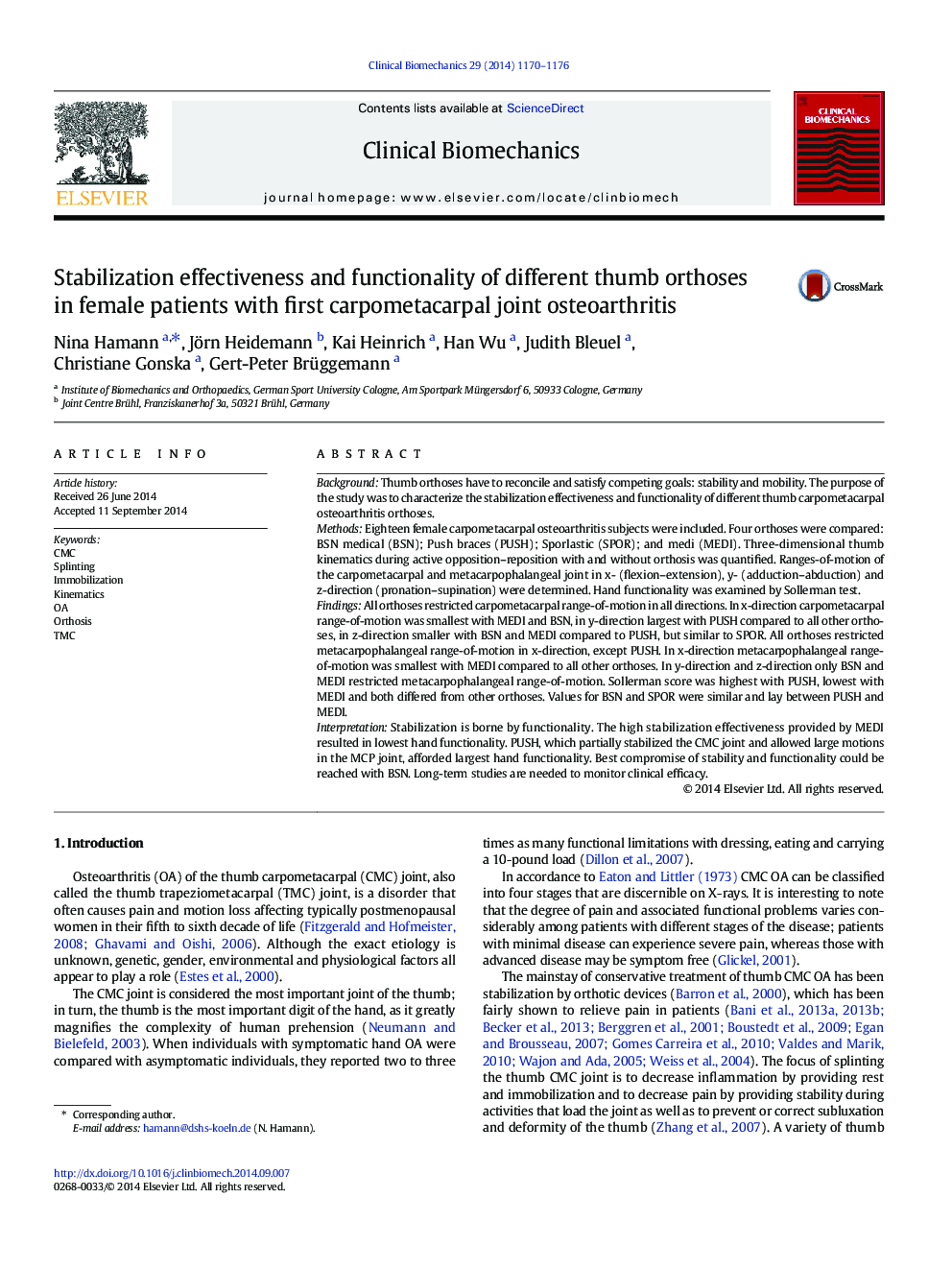| Article ID | Journal | Published Year | Pages | File Type |
|---|---|---|---|---|
| 6204776 | Clinical Biomechanics | 2014 | 7 Pages |
â¢The stabilization efficacy and functionality of thumb CMC OA orthoses were analyzed.â¢3-D thumb CMC and MCP joint kinematics and hand function were quantified.â¢CMC and MCP joint motion restriction is at the expense of hand functionality.â¢Orthotic designs have to satisfy competing demands: stability and mobility.â¢Natural hand posture-fitted design primarily stabilizing the CMC joint is favored.
BackgroundThumb orthoses have to reconcile and satisfy competing goals: stability and mobility. The purpose of the study was to characterize the stabilization effectiveness and functionality of different thumb carpometacarpal osteoarthritis orthoses.MethodsEighteen female carpometacarpal osteoarthritis subjects were included. Four orthoses were compared: BSN medical (BSN); Push braces (PUSH); Sporlastic (SPOR); and medi (MEDI). Three-dimensional thumb kinematics during active opposition-reposition with and without orthosis was quantified. Ranges-of-motion of the carpometacarpal and metacarpophalangeal joint in x- (flexion-extension), y- (adduction-abduction) and z-direction (pronation-supination) were determined. Hand functionality was examined by Sollerman test.FindingsAll orthoses restricted carpometacarpal range-of-motion in all directions. In x-direction carpometacarpal range-of-motion was smallest with MEDI and BSN, in y-direction largest with PUSH compared to all other orthoses, in z-direction smaller with BSN and MEDI compared to PUSH, but similar to SPOR. All orthoses restricted metacarpophalangeal range-of-motion in x-direction, except PUSH. In x-direction metacarpophalangeal range-of-motion was smallest with MEDI compared to all other orthoses. In y-direction and z-direction only BSN and MEDI restricted metacarpophalangeal range-of-motion. Sollerman score was highest with PUSH, lowest with MEDI and both differed from other orthoses. Values for BSN and SPOR were similar and lay between PUSH and MEDI.InterpretationStabilization is borne by functionality. The high stabilization effectiveness provided by MEDI resulted in lowest hand functionality. PUSH, which partially stabilized the CMC joint and allowed large motions in the MCP joint, afforded largest hand functionality. Best compromise of stability and functionality could be reached with BSN. Long-term studies are needed to monitor clinical efficacy.
